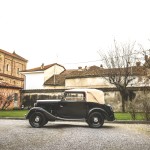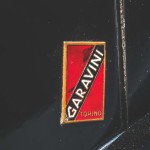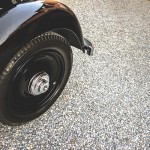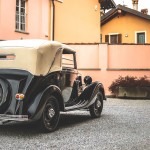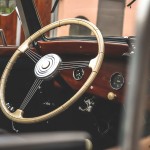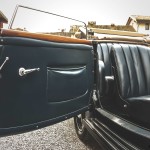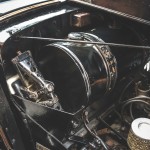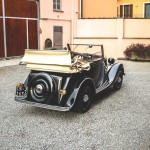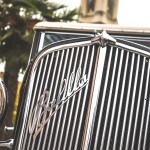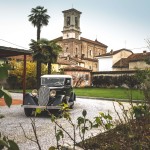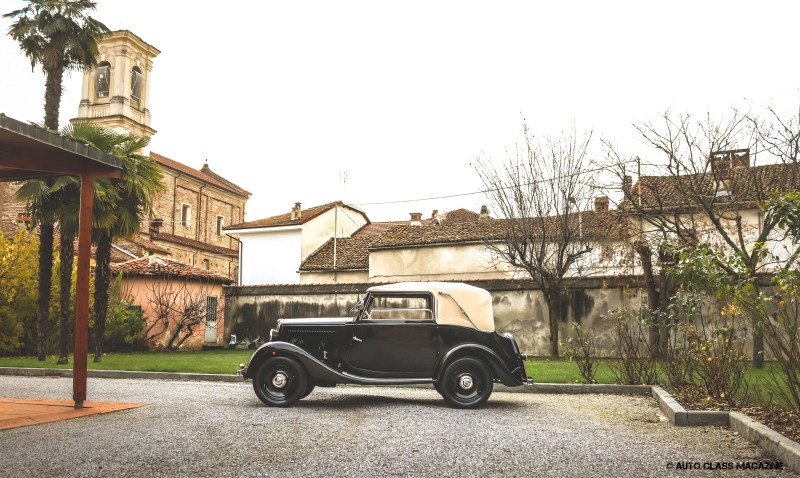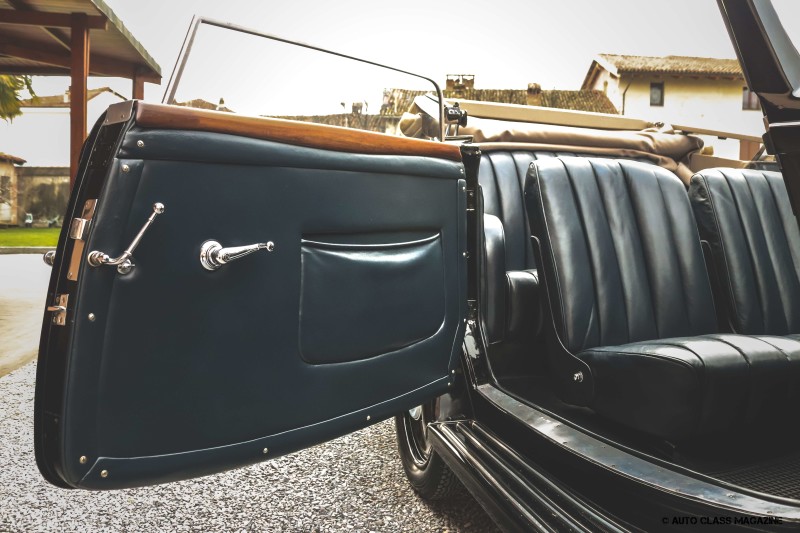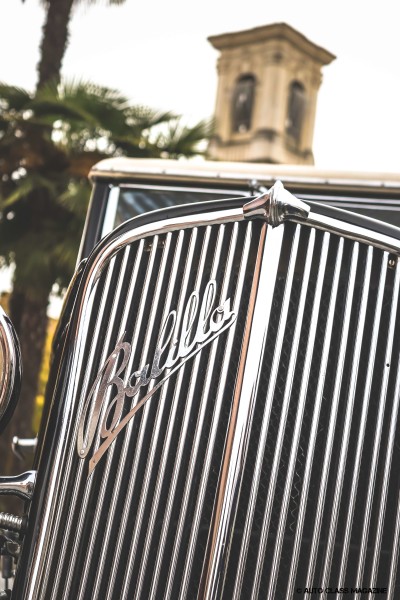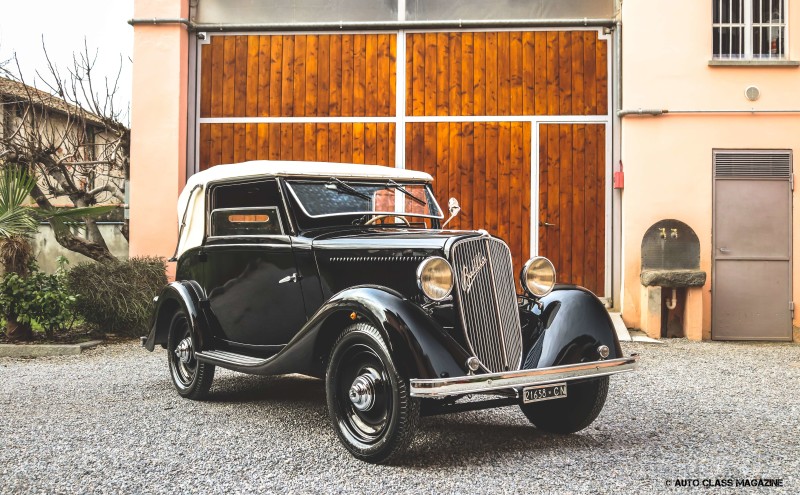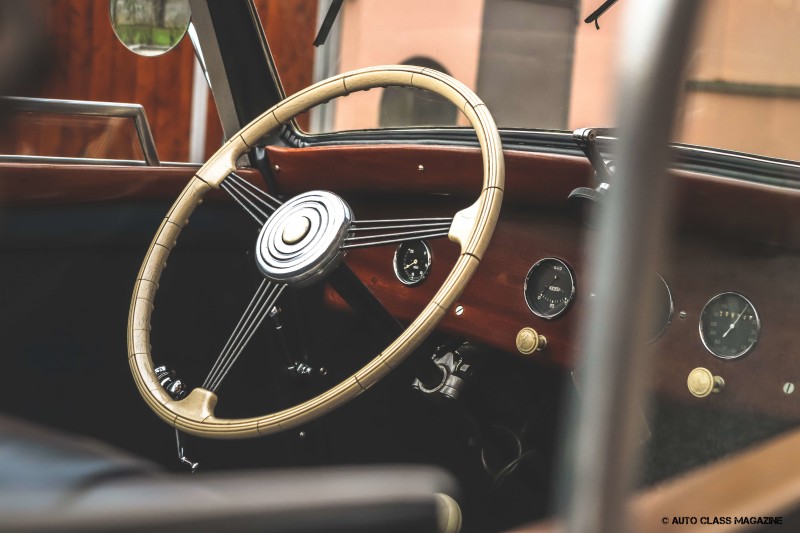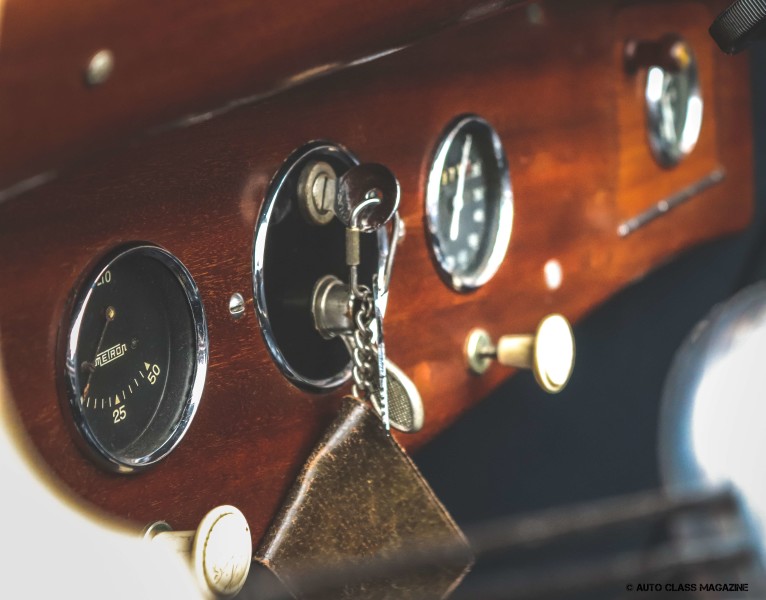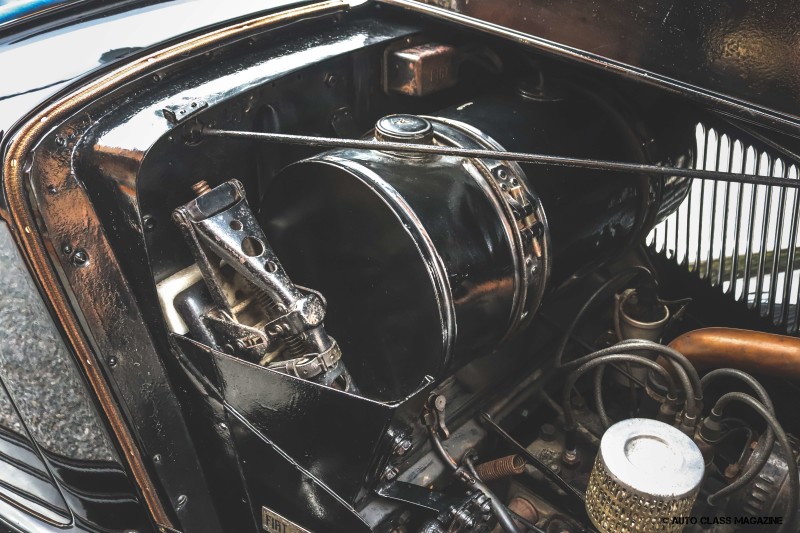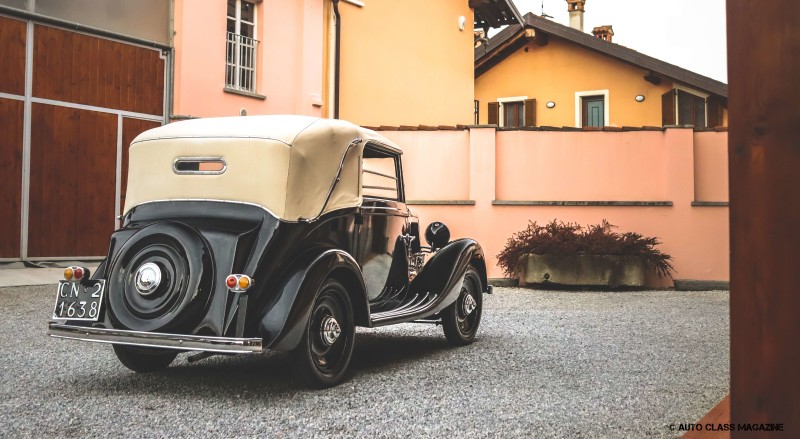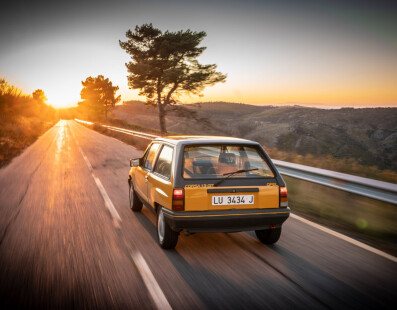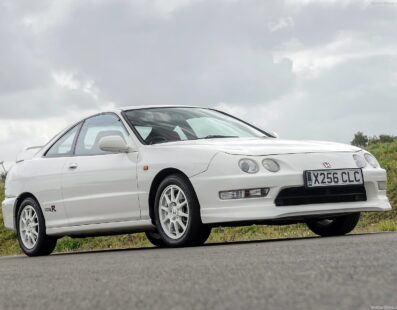
Fiat Balilla Garavini| Vintage
EXCLUSIVE CABRIOLET FROM THE 30s
Words by Remigio Camilla / Photos by Alessandro Marrone
In 1932 FIAT presented the “Balilla” at the Milan Motor Show, a two-door, four-seater sedan with a petrol engine of only 995 cc, a three-speed synchronized gearbox plus reverse, whose real name or abbreviation is 508.
The model immediately gained a lot of consents, so Fiat offers the new car in different versions, Spyder, Spyder Sport, Berlinetta MM, Torpedo Civile and Coloniale and finally also with a pickup truck layout. Despite all these versions, many chassis are sent to coachbuilders then interpreting and personalizing them mainly based on customer requests, resulting in a new phenomenon, since until then coachbuilders were only working on cars with much more consistent displacement and prestige.
Many of these chassis arrive at the Carrozzeria Garavini, founded in 1908 in Turin and located in via Regina Margherita, specialized in the creation of high-luxury cars highly appreciated for their elegance, refined finishes and at the same time for their practicality of use. Especially in the 1930s period – characterized by Art Decò, – Carrozzeria Garavini applies some aesthetic concepts of this important art movement on their bespoke cars, using quality materials worked with great skill for the interiors and chromatic finishes for the exterior that always appear elegant, refined and of great aesthetic impact.
There are also many patented technical devices to improve on board comfort and ease of use of their built cars, including the opening and closing system of the hood in the spyder, convertible and torpedo models, through balancing systems and counterweights. The most famous and important introduction, however, which had aroused a lot of interest when it was first unveiled at the Milan Motor Show in 1927, was the use of elastic pads between the bodywork and the chassis which was not very rigid at the time, with the function of absorbing vibrations and stresses transmitted to the bodywork, often cause of injuries or breaking of the same, thanks to the precarious road surface of the era. This patent was called “Plumelastica” if applied on a body with a wooden structure as in the case of the FIAT Balilla you see on these pages, or “Plumacciaio” if applied on bodyworks with an entirely metal structure.
The Garavini we are happy to introduce here is a 1934 FIAT 508 Balilla Cabriolet, therefore corresponding to the second series with a four-speed gearbox. The current owner discovered it in 1961 in precarious conditions but complete, at a wrecker not so far from where he lived. He saves it from demolition and patiently and expertly restores it over time and today his Balilla is in splendid conditions. The charm and elegance of this car immediately attract for some aesthetic details of the bodywork. The total black color as monochromatic choice, also extended to the lights and wheel rims which are in sheet metal and not in spokes, in stark contrast to the very light canvas hood and the slenderness of the engine hood, obtained by eliminating the chromed side thickness of the radiator grille typical of all Balillas, again in black, to lengthen the same engine hood. The aesthetic choices along the sides do not give way to unnecessary decorations or chrome profiles, making the car aesthetically clean and at the same time refined and typically 30s.
At the base of the bonnet immediately above the line of the platform, there is the rectangular logo made of enameled brass, with the “Garavini” badge placed on a black transversal placque and positioned on a red background on which the word “Turin” is placed as well, horizontally on the short side of the logo.
The canvas roof, enriched by a Garavini patent for the opening simplicity, the number of which is shown on the side uprights of the same on a special vertical profile in polished aluminum next to the descending windows, is made of three superimposed and distinct layers of differentiated materials. The first external one is in very light waterproof canvas, the central does protect from noise and rain and the third is in soft finishing cloth on the inside. Precious and rare for the time, the courtesy light for the cabin is located in the retractable roof panel, behind the rear seat.
The front windscreen slightly inclined backwards is hinged at the top so as to allow its tilting opening, thus offering good internal ventilation in hot weather when traveling with the car closed and is equipped with a two-brush wiper.
The interior is made with the same refinement that characterizes the exterior, the dashboard is made entirely of wood with three circular instruments, the odometer with speed up to 120 (even if the real one is just 80), the oil pressure gauge, the clock placed on the small glove compartment, in the center a round compartment as on the standard model with the key for the electrical contact and the light switch lever. The two white bakelite knobs are positioned symmetrically at the base, for starting the engine and enriching it during cold starts, always in the same color and material as the gear lever knob and the steering wheel.
The front and rear seats with side armrests, as well as the side panels and door panels, are made of leather in a dark blue color, which creates a pleasant and equilibrate contrast with the black color of the body. A wooden profile of the same finishing as the dashboard joins the two doors in the upper part at the base of the windows, whose leather covering panels are equipped with a large document pocket. The top of the hood is in light gray cloth and can be opened by sliding two small round chrome knobs located on the two sides of the hood. When you sit inside and look ahead, you do not have the perception of being in a convertible, as both the structure of the frame that supports it and the controls for its opening are totally hidden, thanks to the quality of the project and the truly high production, equal to that of more prestigious cars. Access to the rear bench is facilitated by tipping the front backrests and by the wide opening and size of the doors, without uprights or frames around the descending glass. The rear backrest can also be folded forward, thus allowing access to the small luggage compartment, where some bags or a suitcase can find space pretty easily. The care with which the interior is made can also be noticed in the small but important details, such as the shape of the white bakelite control knobs, the white three-spoke steering wheel, each made from four thin metal profiles that are not parallel but come as a V, from the door opening handles, or the descending glass control handle, nothing obvious and nothing in common with the standard 508.
Access to the engine compartment happens by lifting one of the two folding wings that form the volume of the engine bay, hinged centrally and above, as required.
It is interesting to find out that the car is fitted with a water radiator with a honeycomb radiant mass, typical of the first series and not the second. It is difficult to establish whether the frame is the original one of the first three-speed series, coming from the warehouse, and to which the four-speed gearbox has been fitted, or whether the frame is actually of the second series which over time has been replaced for some reason at the expenses of the original radiator. Currently no research has been carried out in the historical Fiat or Balilla archives by the current owner. The engine compartment appears very large highlighting all of its components, the small four-cylinder in-line engine block of just 12 fiscal horses, the cylindrical and vertical air filter, the distributor, the radiator with the four-blade fan. Everything is very simple, there is no water pump, its circulation is not forced but happens thanks to a radiator, there’s no petrol pump, because the carburettor is powered by dropping from the tank located in the upper part of the engine compartment. Cylindrical in shape, it is placed horizontally and fixed to the flame-cutting wall that separates it from the passenger compartment by two metal straps, which support it like a backpack, on whose left side looking at it from the front, there is room for the car’s lifting tools and for the wheel change, in addition to the housing place for the FIAT engine oil can of the time. The anchoring system allows easy disassembly and maintenance of the tank, especially at the time when petrol left many deposits and it was often necessary to clean it.
The small engine displacement with a modest fiscal horsepower, the simple and robust mechanics, the easy maintenance and a good cruising speed for the time, had determined with certain ease the success and the spread of the Balilla. The car was not exactly within everyone’s reach, but certainly for many Italians, also thanks to the opportunity to buy it for the first time in installments and to the new tax rules that the Fascist government had issued for utilitarian cars within the 12 hp tax. Interesting, at the advertising level, it is a short cartoon produced by Fiat and entitled “It is no longer a dream”, where all the positive aspects of the new 508 are highlighted: exemption from circulation stamp payment, installment purchase, habitability for four people, low fuel consumption and easy maintenance. At the end of the video, a full-screen image portrays a young boy in a fascist uniform, holding the small car in the palm of his hand, symbolizing the launch of the Balilla, imitating the young Genoese Gianbattista Perasso in the act of throwing the stone against a squad of Austrian soldiers, thus initiating the insurrection of Genoa against the invaders. Among the accessories of the time, but also on sale today, the chromed statuette to be placed on top of the radiator, which portrays the Genoese “Balilla” in the act of throwing the stone and from which the new car has its name.
In the 1930s Garavini became one of the major and renowned Turin coachbuilders who best interpreted and dressed the small chassis of the cute FIAT 508 Balilla.
